Additional bot frameworks
The following procedure describes how to create a bot connection using Live Hub for the following bot frameworks:
-
AudioCodes Bot API
-
Koda
-
Any other bot framework that has implemented AudioCodes bot API
-
-
Rasa Pro
-
Rasa
-
Kore.AI
-
Amazon Lex
-
DRUID
-
Enterprise Bot
-
ChatBot Builder
-
Cognigy
-
Ideta
-
Inbenta
-
Haptik.AI
-
Creative Virtual
To create a bot connection:
-
In the navigation menu pane, select Bot connections, and then click Add new voice bot connection or Add new assist bot connection; the following appears:
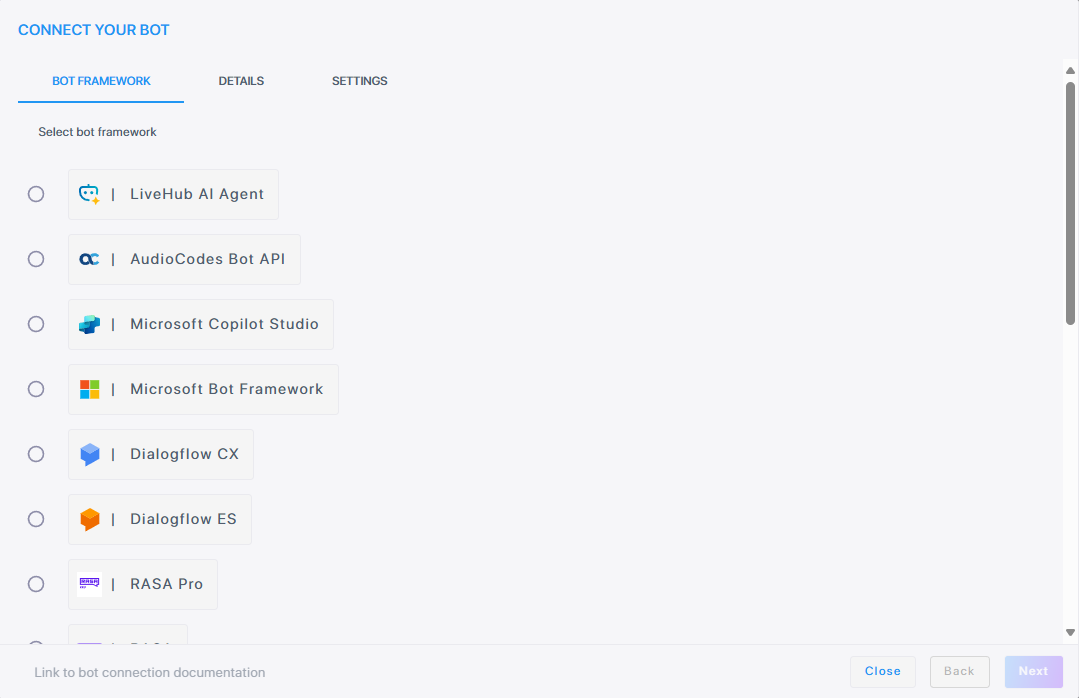
If you want to discontinue this step, click Close.
-
Select the bot framework, and then click Next; the following appears:
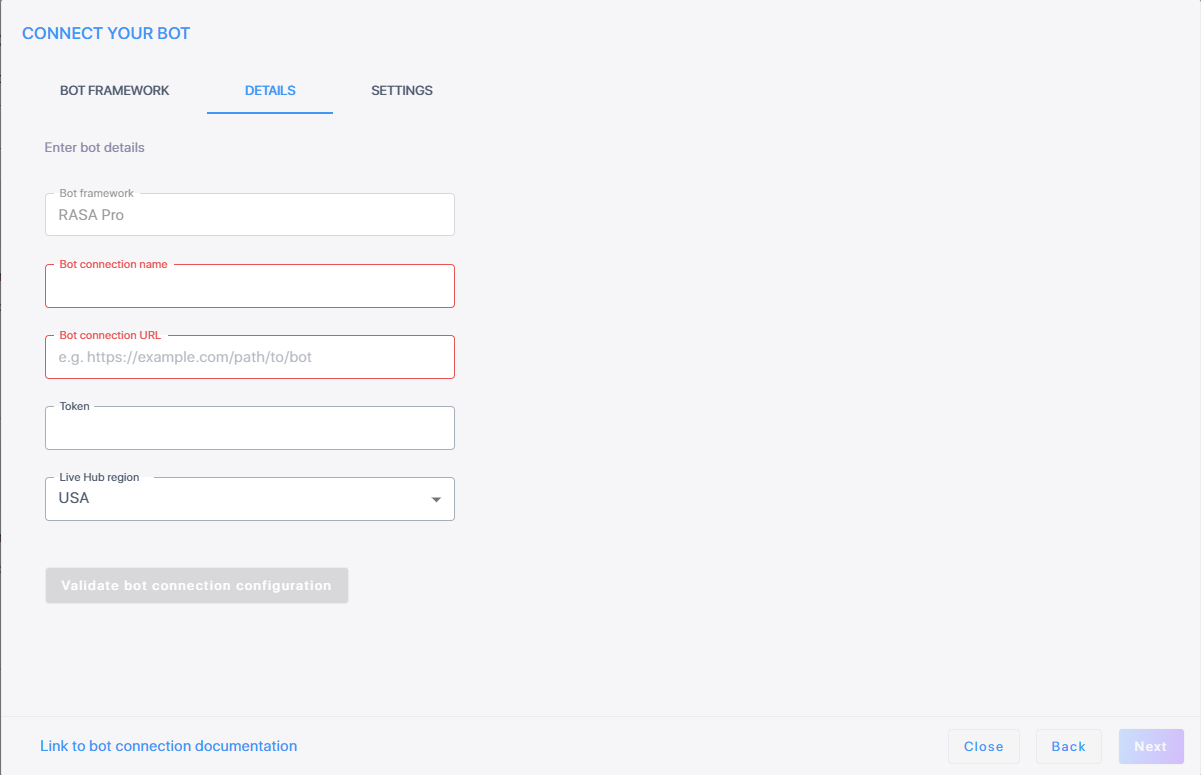
-
In the 'Bot framework' field, enter the bot framework you are using.
-
In the 'Bot connection name' field, enter the name for the bot.
-
In the 'Bot connection URL' field, enter the bot URL protocol for creating new conversations as defined in the AudioCodes Bot API.
-
In the 'Token' field, enter the bot access token. For more information on security, see AudioCodes Bot API.
-
From the 'Live Hub region' drop-down, select the geographical location (region) in which Live Hub voice infrastructure is deployed.
-
To validate the Bot URL and Token, click Validate bot configuration.
-
Click Next. The Settings screen displays different configuration options depending on which speech services you select.
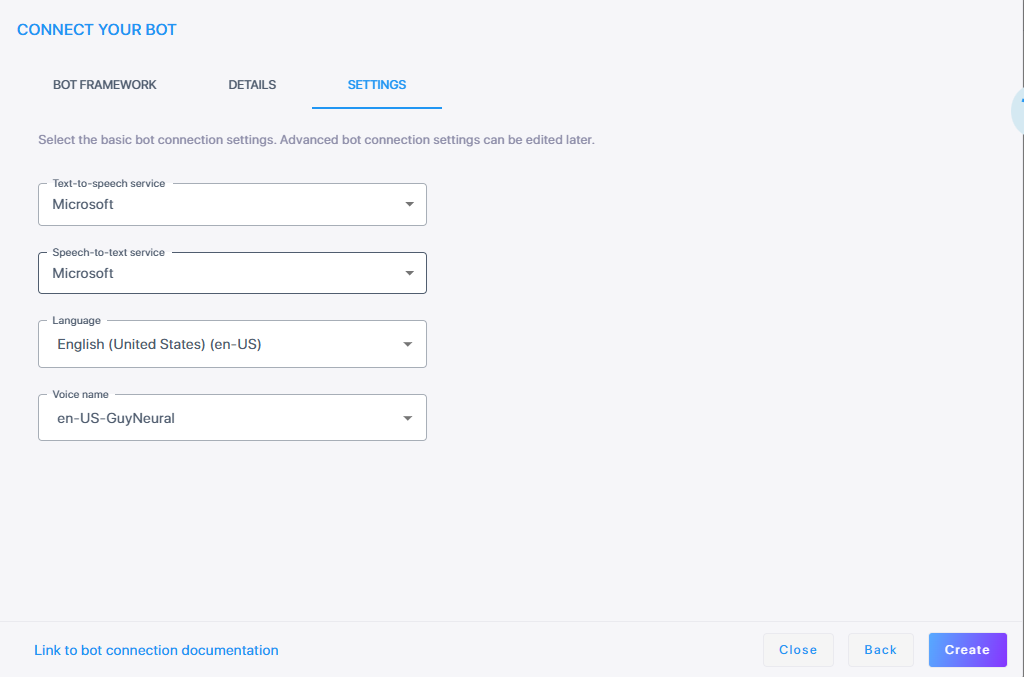
-
From the 'Speech-to-text service' drop-down list, select the appropriate text-to-speech service.
-
If you selected Microsoft, Google V2, or Google V1,
-
From the 'Language' drop-down list, select the appropriate language.
-
From the 'Voice name' drop-down list, select the appropriate voice name.
-
From the 'Text-to-speech service' drop-down list, select the appropriate text-to-speech service.
-
From the 'Language' drop-down list, select the appropriate language.
-
From the 'Voice name' drop-down list, select the appropriate voice name.
-
If you selected Deepgram,
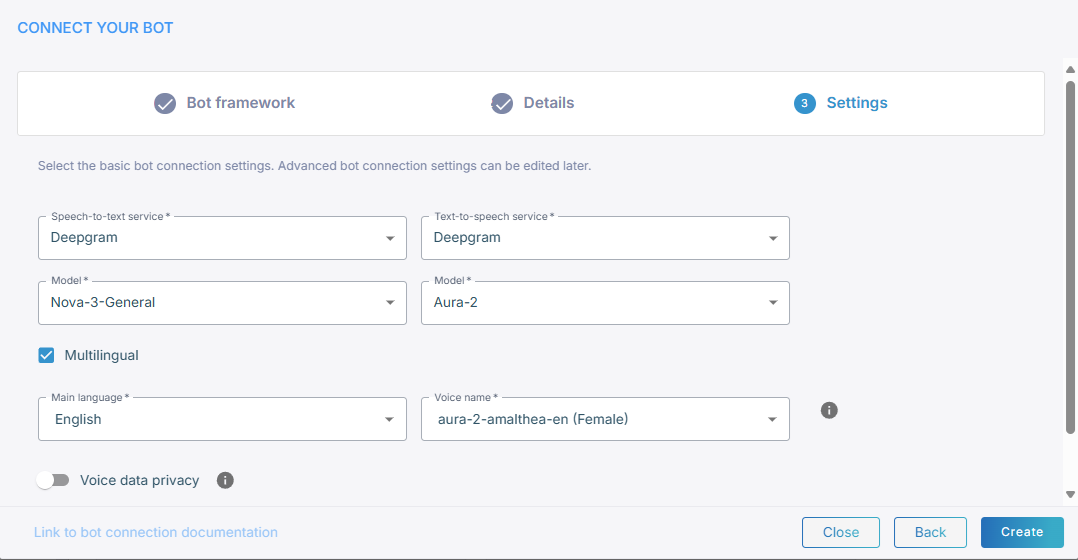
-
From the 'Model' drop-down list, select speech recognition model (for example, Nova-3-General).
-
From the 'Text-to-speech service' drop-down list, select the appropriate text-to-speech service. If you also select Deepgram, from the 'Model' drop-down list, select speech recognition model (for example, Aura-2).
-
Select Multilingual if you need multi-language support. When enabled, a 'Main language' field appears where you can define your main language.
-
If you didn’t select Multilingual, from the 'Language' drop-down list, select the appropriate language.
-
From the 'Voice name' drop-down list, select the appropriate voice name.
-
Toggle Voice data privacy. When disabled, you consent to share your data. When enabled, you deny consent to share your data. Enabling this option requires additional payment.
-
-
From the 'Text-to-speech service' drop-down list, select ElevenLabs,
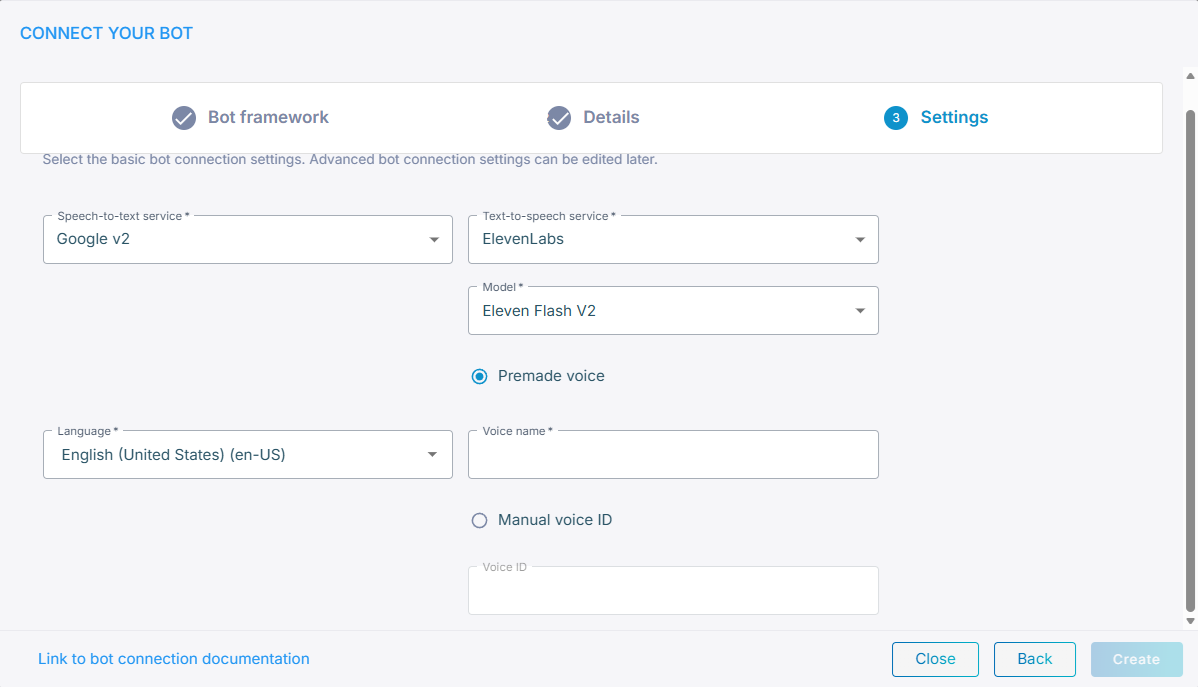
-
From the 'Model' drop-down list, select speech recognition model.
-
Select Premade voice or Manual voice ID.
-
If you selected Premade voice, enter the voice name that is provided by ElevenLabs.
-
If you selected Manual voice ID, choose the voice ID that you created.
-
-
-
-
Click Create; the new bot is created.
